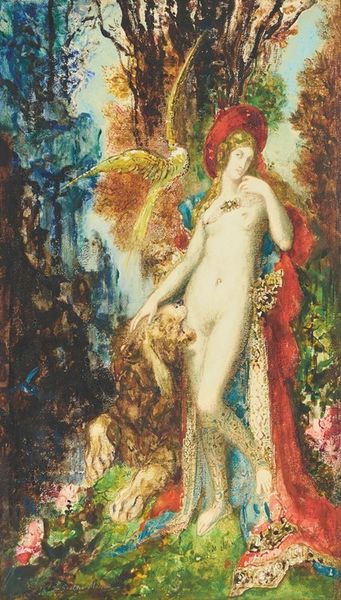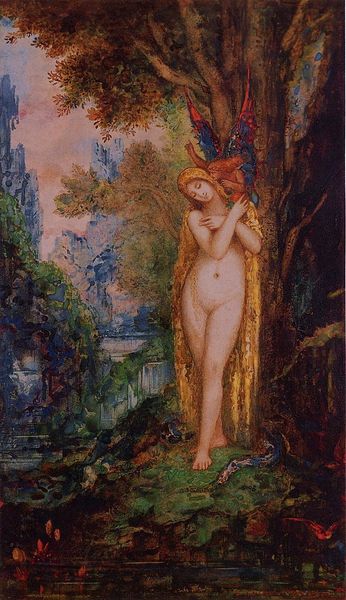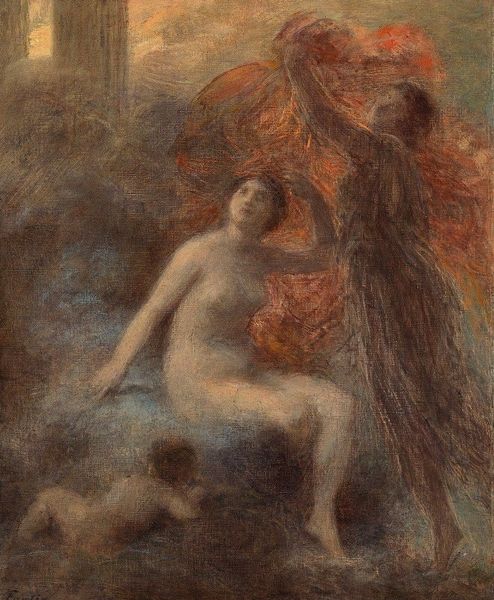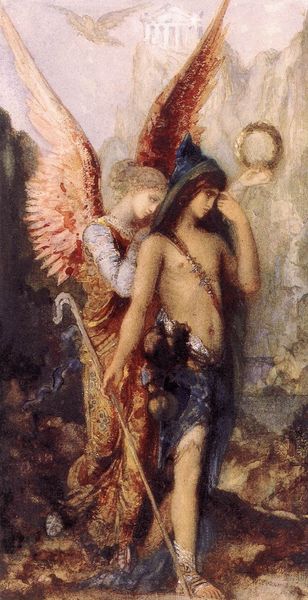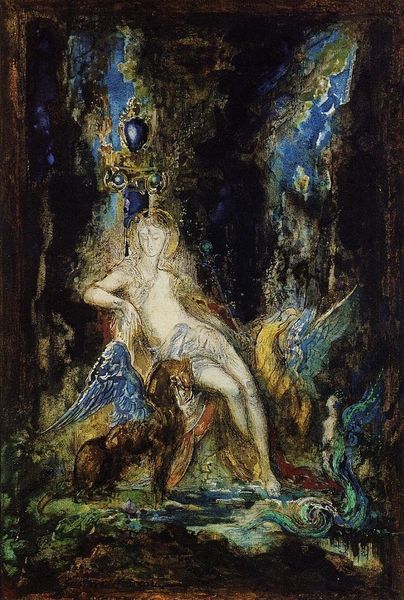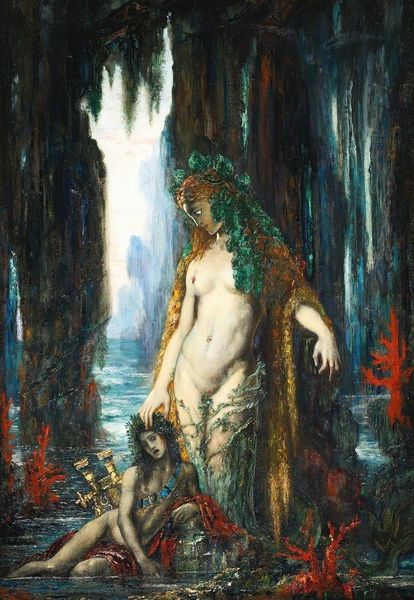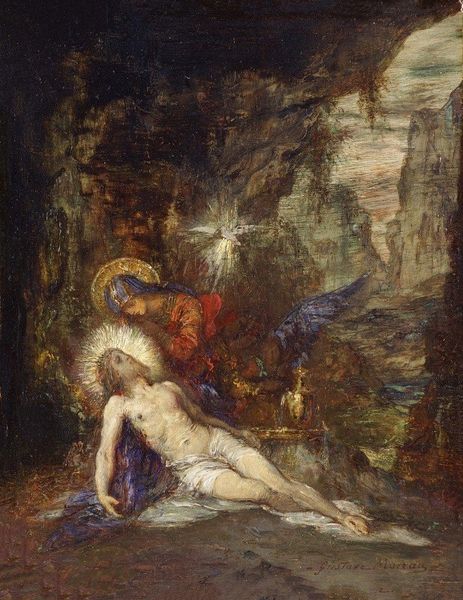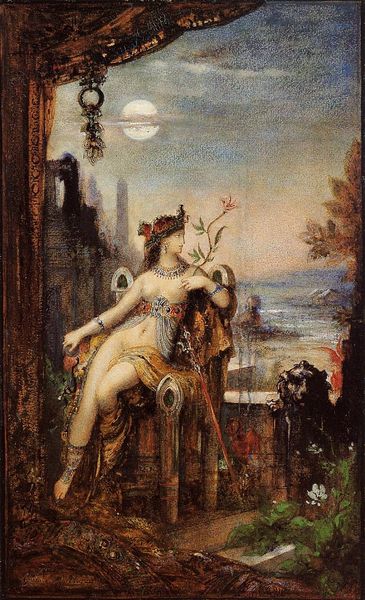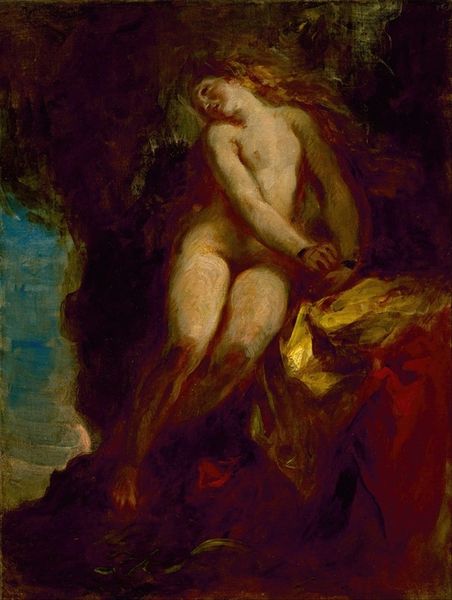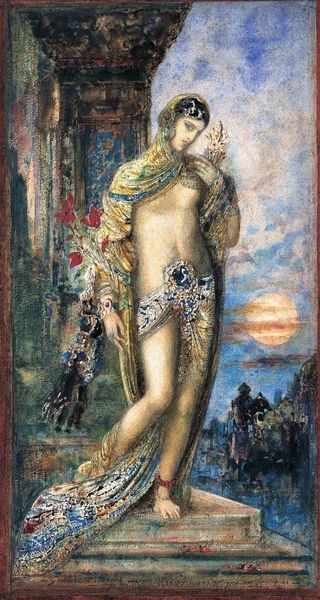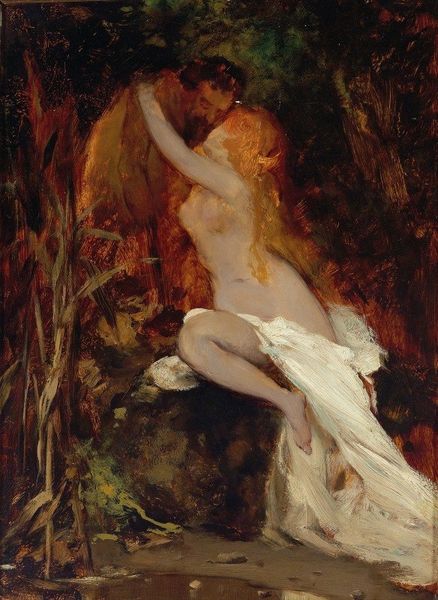
Copyright: Public domain
Curator: Here we have Gustave Moreau’s "Goddess on the Rocks," an oil painting created around 1890. It’s part of a private collection, but it provides an evocative peek into Moreau's Symbolist style. Editor: My immediate reaction is one of shimmering unease. The palette feels muted yet rich, and this goddess is presented in this very melancholic state; very different than other artwork. Curator: Yes, Moreau was quite preoccupied with mythological themes and particularly the figure of the femme fatale. One could argue that this is his distinct contribution. Note how he's deploying this opulent style with oil paints to depict the themes of mythology and the dangerous allure of women. Editor: Absolutely. And how does this romanticized or mythological treatment, as seen in Moreau's oil painting, engage with historical and contemporary constructions of gender and power? This seems to be an idealized, possibly unattainable version of femininity. What are we meant to take from this goddess, who sits not triumphantly on a throne but languidly amongst these rugged rocks, almost in retreat? Curator: Precisely. The goddess, in this rendering, isn’t merely an object of visual consumption but an actor involved in the creation of social meaning, in Moreau's vision, with his particular process. Editor: And by focusing on material reality, how might Moreau's choices challenge us to consider gender not just as an abstract idea but something performed, consumed, and lived through within certain economic conditions of production? How the artwork can serve as this lens. Curator: This interplay—it's at the heart of what Moreau does best, blurring boundaries to give rise to compelling artistic expressions, particularly on the representation of powerful feminine icons and feminine sexuality. Editor: It certainly provides much food for thought on the constructions and performances around gender that persist even today. Curator: A painting rich in textures of ideas and technique, to say the least! Editor: Indeed; the goddess on the rocks prompts discussions on the shifting sands of gender, history, and artistic intention.
Comments
No comments
Be the first to comment and join the conversation on the ultimate creative platform.
